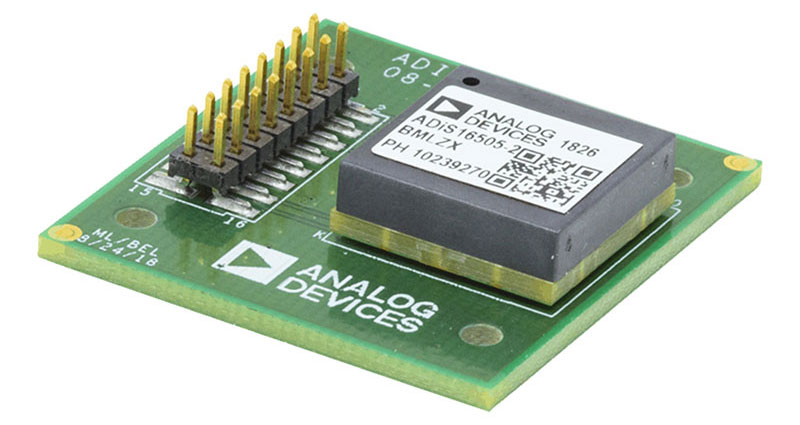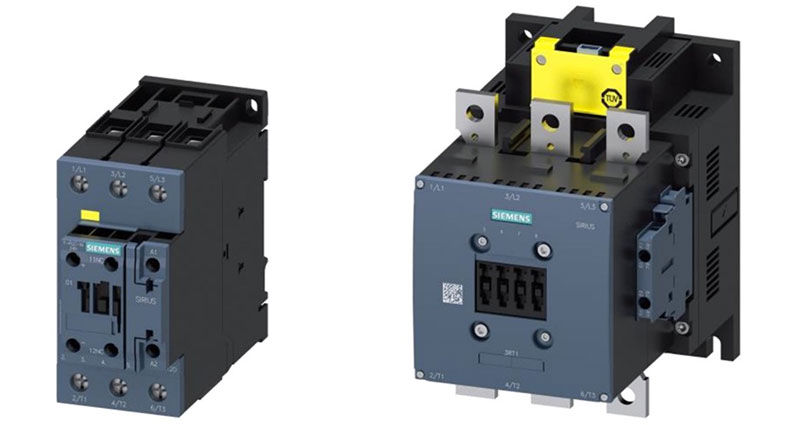Flat Ribbon Cables and 0.050” Pitch Connectors Can Help Optimize Interconnect System Performance
If you’re involved in the design of advanced automated test equipment (ATE), industrial controllers, or communication systems, you already know the challenges associated with reliably connecting high-speed signals in tight quarters. Depending on the performance expectations, I’ve seen designs that can require connection speeds from under 500 megabits per second (Mbps) to over 10 gigabits per second (Gbps), and use protocols like small computer systems interface (SCSI)-3 Fast-20 or low-voltage differential signaling (LVDS).
If you’re designing for this type of environment, your efforts might benefit from using high-density interconnects with fine pitch 0.050” (1.27 millimeter (mm)) wire-to-board connector systems supported by flexible ribbon cables that can simplify system layout and speed assembly. Your design might also benefit from:
- Latching connectors for increased protection against accidental disconnect
- Beryllium copper (BeCu) contacts with optional features like 30 micro inch (μ”) gold (Au) and Au flash plating versions to support multiple mate/unmate cycle option levels
- Polarized keys that can ensure proper connection
- Strain reliefs for improved connection security
- A choice of straight and right-angle mounting
Which of these will be most beneficial to you depends upon the situation. Generally, design considerations for communications interconnect systems can be lumped into two categories: electrical and mechanical. Let’s start with a review of the interconnect impedances needed by our SCSI-3 Fast-20 and LVDS example interfaces. We’ll then look at other electrical and mechanical considerations, and close with a wire-to-board connector system from 3M that comes with a wide array of options and foldable controlled-impedance ribbon cable assemblies that support robust high-speed communications.
Electrical
Impedance is a key electrical spec. The ULTRA (Fast 20) annex of SCSI-3 specifies a range of 80 to 100 ohms (Ω), with 84 to 96 Ω for the clock, REQ, and ACK signals. More specifically, the SCSI standard recommends an impedance of 100 Ω ±10% for unshielded flat or twisted-pair cables. A 95 Ω impedance is recommended for LVDS applications, but with a tighter tolerance of ±5%.
Other common electrical specifications include:
- A current rating of 1 ampere (A) with all lines energized, as required by UL
- A voltage rating of 125 volts alternating current (VAC)
- An insulation resistance >1 x 109 Ω at 500 volts direct current (VDC)
- A withstand voltage of 1250 VDC
Mechanical
Electrical specs ensure clean, high-speed signals, while mechanical specs are designed to ensure robustness, high density, efficient and flexible assembly, and long operation. You need both for an optimal design.
Latching can be important and includes polarization and a basic friction latch, or an optional ejector latch, enabling the addition of positive latching and ejection with minimal size impact. Some applications benefit from a strain relief to protect against damage if users pull on a terminated cable.
For today’s high-density applications, you can use a 0.050" pitch wire-to-board system that is half the size of a standard 0.100" pitch connector. Flexible assembly options include a choice of straight and right-angle connectors and through-hole or surface-mount assembly. Tape and reel packaging can enable automated assembly, and PC board standoffs allow pin-in-paste assembly processes.
The use of ribbon cables and insulation displacement contacts (IDC) can support high-density, flexible, and low-profile designs, as well as rapid, nearly fool-proof assembly. You can further enhance your design by choosing BeCu contacts for low-stress relaxation, good overall reliability, and long service life. You can also opt for 30 μ” Au or Au flash plating that supports multiple mate/unmate cycle option levels.
Putting it all together
That’s a daunting array of electrical and mechanical requirements and options to consider. Fortunately, 3M has numerous solutions to address the needs of specific circumstances. If you’re building your own cable assemblies, you can use the 451 series sockets and 452 series board-mount headers. For example, model 45230-220230 is a 30-position surface-mount header, and model 45130-010030 is the companion 30-position IDC socket. Both feature a 0.050” pitch and 30 μ” Au plating for compact and robust connections. The 452 series board-mount headers (Figure 1) and 451 series wire-mount sockets include models with a wide range of standard and optional features that enable you to optimize your connector configuration (Figure 2).
 Figure 1: Examples of the standard and optional features of 452 series board-mount headers. (Image source: 3M)
Figure 1: Examples of the standard and optional features of 452 series board-mount headers. (Image source: 3M)
 Figure 2: In addition to supporting high density, you can customize the 452 series board-mount headers and 451 series ribbon cable wire-mount sockets with optional features.
(Image source: 3M)
Figure 2: In addition to supporting high density, you can customize the 452 series board-mount headers and 451 series ribbon cable wire-mount sockets with optional features.
(Image source: 3M)
Quick-turnaround designs
You can often face a quick-turn project or other circumstances that can benefit from prebuilt cable and socket assemblies. 3M has those needs covered with several performance options. For example, the 451 series socket assemblies and 3749 series flat cables are available in 3” and 6” lengths with 10 to 30 contacts, able to meet SCSI-3 Fast-20 impedance requirements. Model 45114-010030-3749/14-D-3 is a double-ended, 14-conductor 3749 series cable assembly with 30 μ” Au plated connectors on both ends.
If you need LVDS electrical performance, 3M's 7700 series is a controlled-impedance cable rated at 95 Ω (±5 Ω). These cables can handle tighter folding than conventional jacketed shielded cables and still provide high performance. That means you can route them through narrow spaces inside equipment and reduce air-flow restriction. They’re available in cable assemblies with 451 socket connectors and come in several lengths with a variety of contact options. For example, the 45110-010030-7700/10-D-12 is a 12” 10-position cable with connectors on both ends.
3M offers you IDC connector solutions for data rates of 500 Mbps up to 20 Gbps (Figure 3). They include flexible pinout configurations, numerous mounting and latching options, and up to 50 positions for differential pairs, grounds, and power connections.
 Figure 3: 3M offers a variety of IDC connector solutions that support connectivity needs from 500 Mbps to 20 Gbps. (Image source: 3M)
Figure 3: 3M offers a variety of IDC connector solutions that support connectivity needs from 500 Mbps to 20 Gbps. (Image source: 3M)
Conclusion
High-performance connections that are reliable in tight quarters are needed across a wide range of applications, but they can be challenging to implement. If you find yourself in need of a solution, 3M’s 451 series socket assemblies, 452 series board-mount headers, and 7700 series controlled-impedance cables can get you up and running quickly at data rates up to 20 Gbps. They are supported by interconnect options like latching mechanisms, strain reliefs, mounting configurations, pin counts, and ribbon cable types.

Have questions or comments? Continue the conversation on TechForum, DigiKey's online community and technical resource.
Visit TechForum











